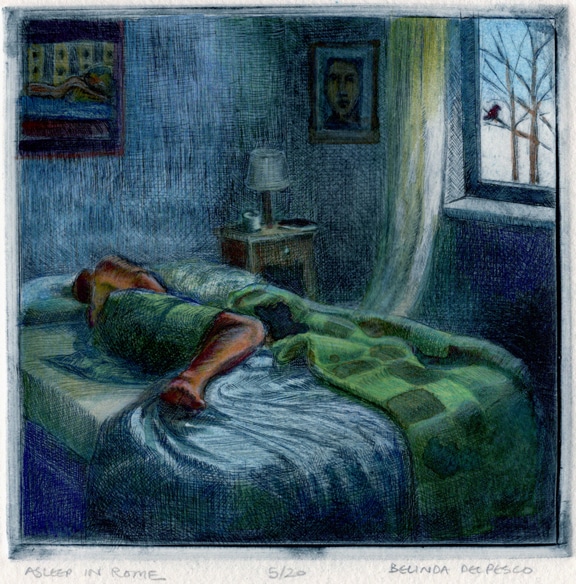
Printmaking Nomenclature
Question: What’s the difference between an etching and an engraving in printmaking?
See the answer at the bottom of this post.
Helpful folks like to point out mis-categorized printmaking terms, and errant tools used in the art studio that were MacGyver’d to get the job done. You and I both know that people have good intentions in their corrections, and we may inadvertently guide innocent beginners down a dark path of misinformation when inaccuracies are sprinkled willy-nilly in a how-to post. I’ve been corrected here, and on my youtube channel many times, so thanks to the process-sticklers out there for keeping me in line. I’ve been super careful in this post to keep my printmaking nomenclature up to snuff. ?
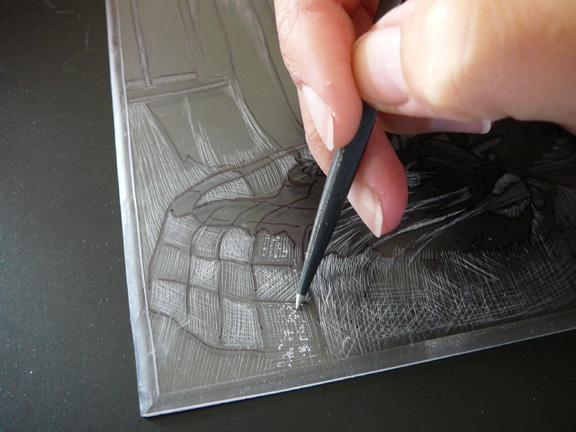
Drypoint Engraving from Plexiglass
Drypoint printmaking is traditionally done on copper plates. Since that material can be difficult to find, and a little spendy, I like to use sheets of plexiglass. (It’s also called acrylic, lexan, perspex and an assortment of branded names.) I buy the stuff in sheets at the hardware store, and cut the plates with a ruler and a utility knife (you can see that here). Since I print on a press, I *always* bevel the plates (see the how-to video below) to avoid slicing through my press blankets and my paper.
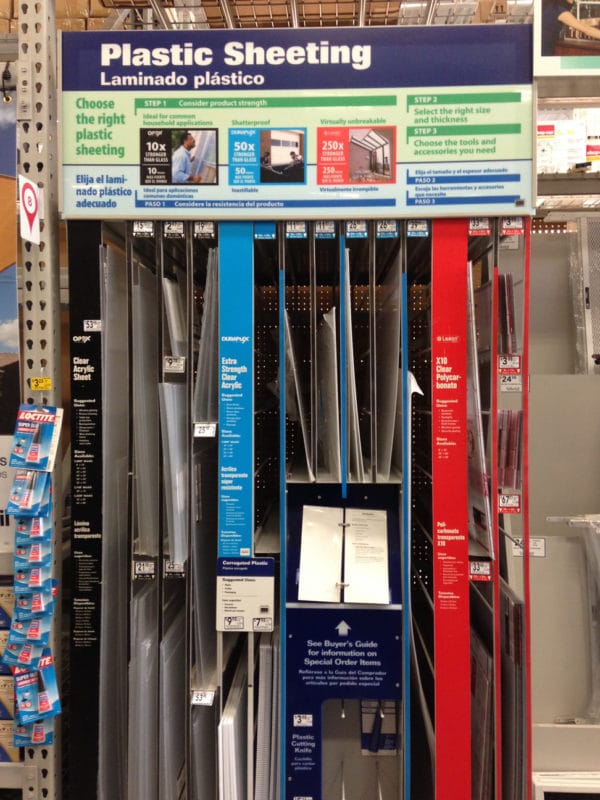
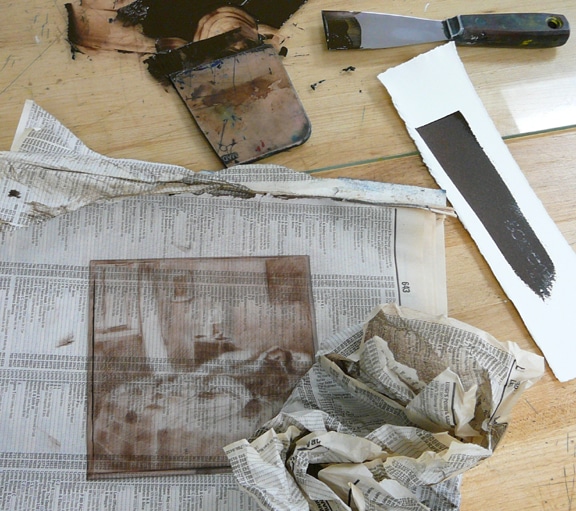
Start Small, Go Slow
If you’ve never made a drypoint before, can I suggest that you start small, and keep your design relatively simple. The print in this post has lots of cross-hatching and mark-making in the plate, and that might take some practise. It’s also a bit challenging to print lots of detail if you don’t have a press, and you’re transferring by hand. It might be best to make a very simple line drawing, with no shading, as your first print. If you like the process of inking and wiping, and you’re pleased with the way the print comes out, you can always make another one, or go back into your first plate to add more detail and cross hatching after you’ve printed a few times.
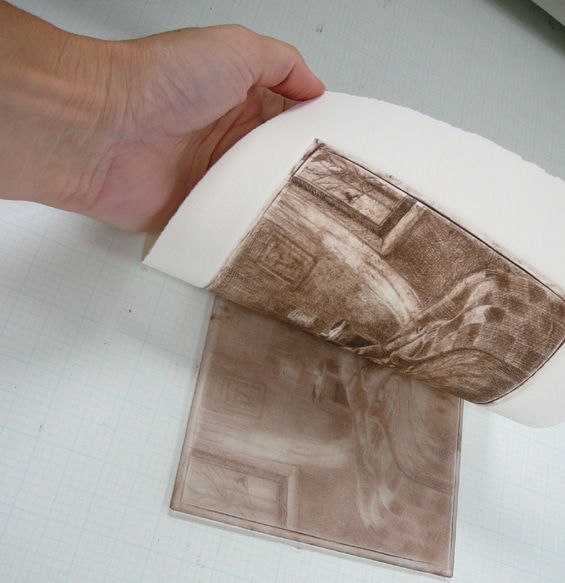
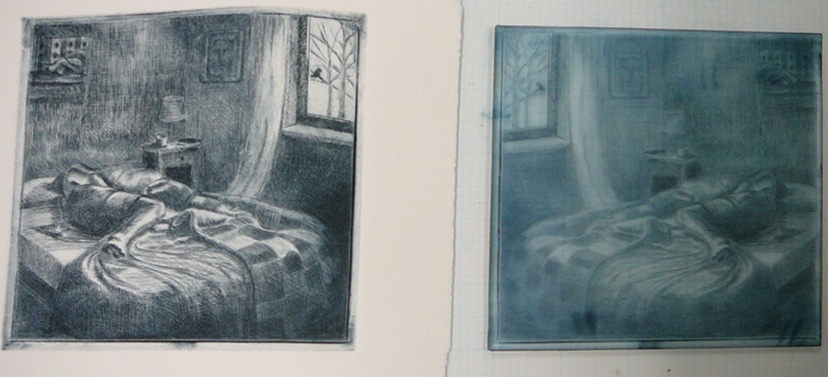
Be inspired by the Masters of Printmaking
Have you ever heard of the artist William Lee Hankey(1869–1952)? Me neither, till earlier this year. I’m absolutely groaning with envy at his mastery of figure drawing, compositional arrangements, and his use of carriage and posture to convey emotion. Have a look at these stunning intaglio prints by Mr. Hankey:
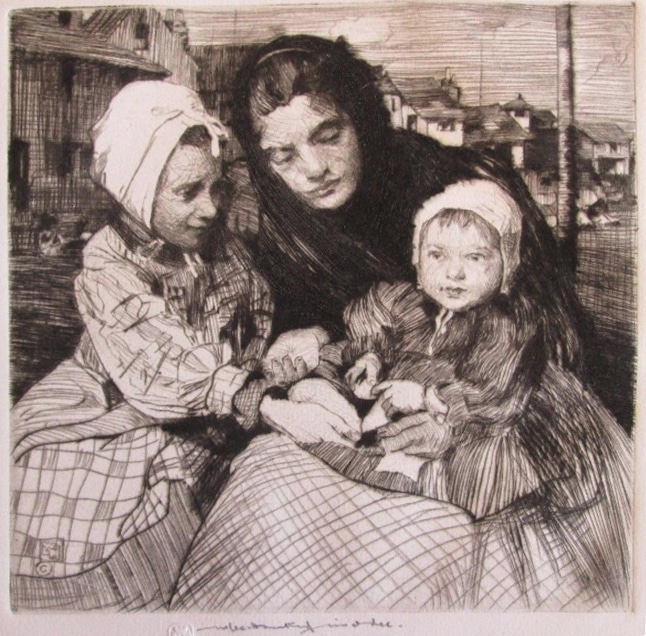
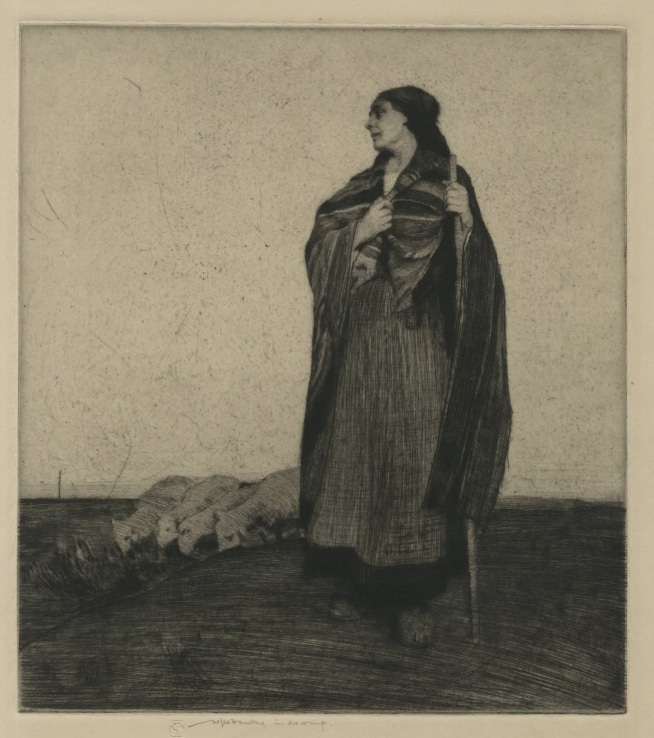
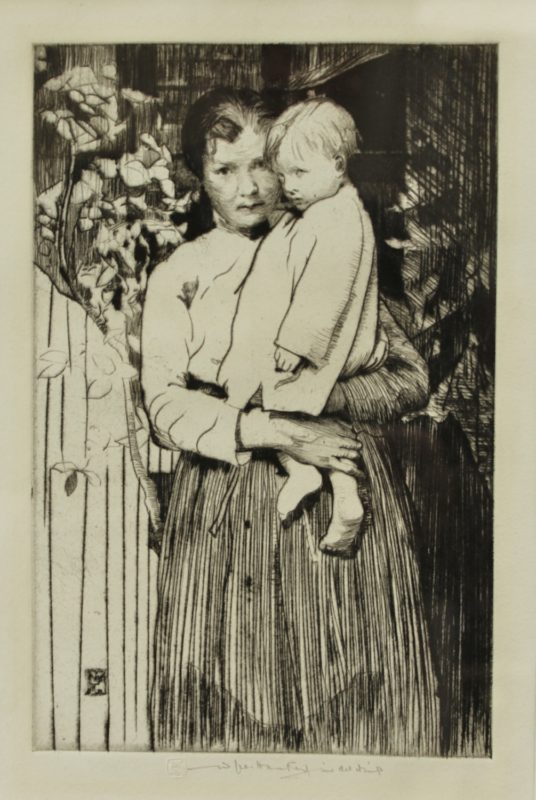
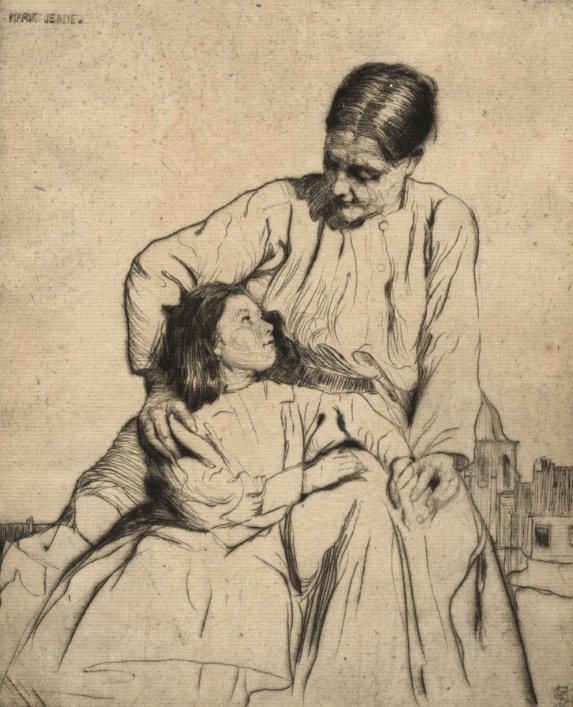
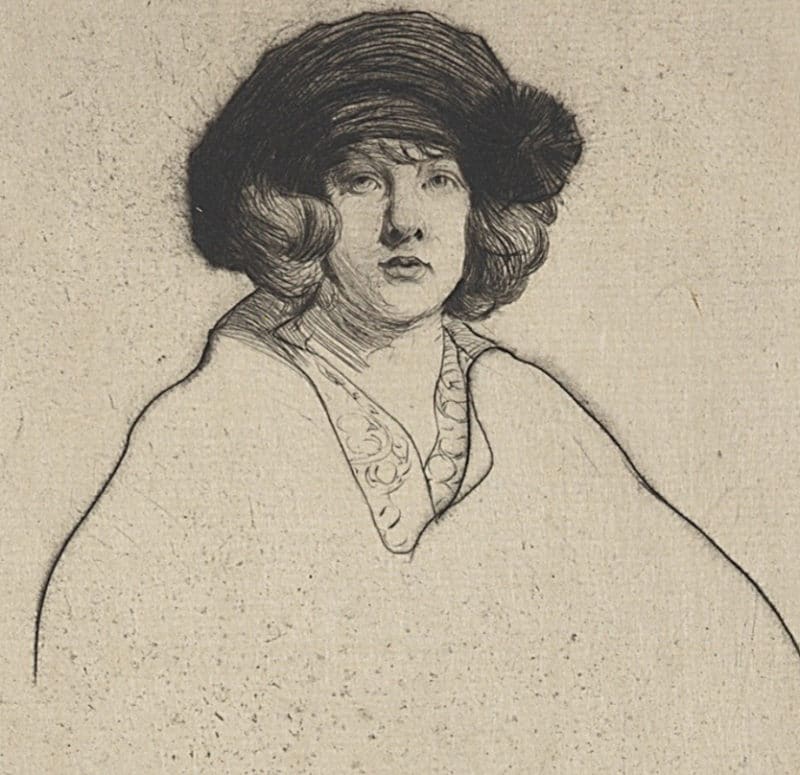
The Wonder of Drypoint Engraving
The film clip below – The Art of Engraving – was shot in William Hankey’s studio in 1923. You and I are lucky, because we get to watch him warm up with a sketch from life (in a three-piece suit, no less!). He then sketches the same figure with a needle on a copper plate. He inks the plate with a leather dauber (also known as an inking ball), and prints the drypoint on his press. The result is the beautiful portrait above titled ‘Madeleine’. And did you notice all the lovely helpers in his studio?!
Should You Try Making a Drypoint?
A deep dive into an art-making process that’s brand new to you is good on *so many levels*.
- Focusing on Art-Making is a distraction from less savory ponderings.
- Making your mind work hard to comprehend sequential steps is good for brain-aerobics.
- Learning a new process adds to your skill set, and increases your options to get out of a creative funk.
- Working in a new medium in the studio often informs your other, more seasoned art-making methods: EX: watercolor practice make us better oil painters, and vise versa.
- If you are the flavor of human that likes personal guidance to tread down a new path, take a weekend workshop in printmaking. Watch a pile of youtube videos on drypoint printmaking. Harvest a gaggle of friends with similar interests, and make dates every two weeks to gather and learn the process together.
Either way, I hope you stretch your skills this Fall, and add to your art-making repertoire with a twinkling spark of something brand new to you.
Happy art-making, and I’ll see you in the next post –
Belinda
P.S. Answer: what’s the difference between an etching and an engraving in printmaking?
For engravings, the artist uses an etching needle (or a dremel) to draw directly onto the plate. For etchings, the artist seals the plate with wax, sketches onto the wax, then slips the plate into a timed acid bath to “bite” (etch) into the exposed metal linework.
In both methods, the finished plate is inked, wiped and printed on paper, producing a mirror-image of the original design.
Etching uses acid, so it’s a wet-process. Engravings use a dry process – just a sharp point, hence the term “drypoint”. So “drypoint etching” is a misnomer. A drypoint is an engraving.
While searching for examples of drypoints to be inspired on google, be sure to use both etching and engraving with the word drypoint, as people often mix and match the terms. ?
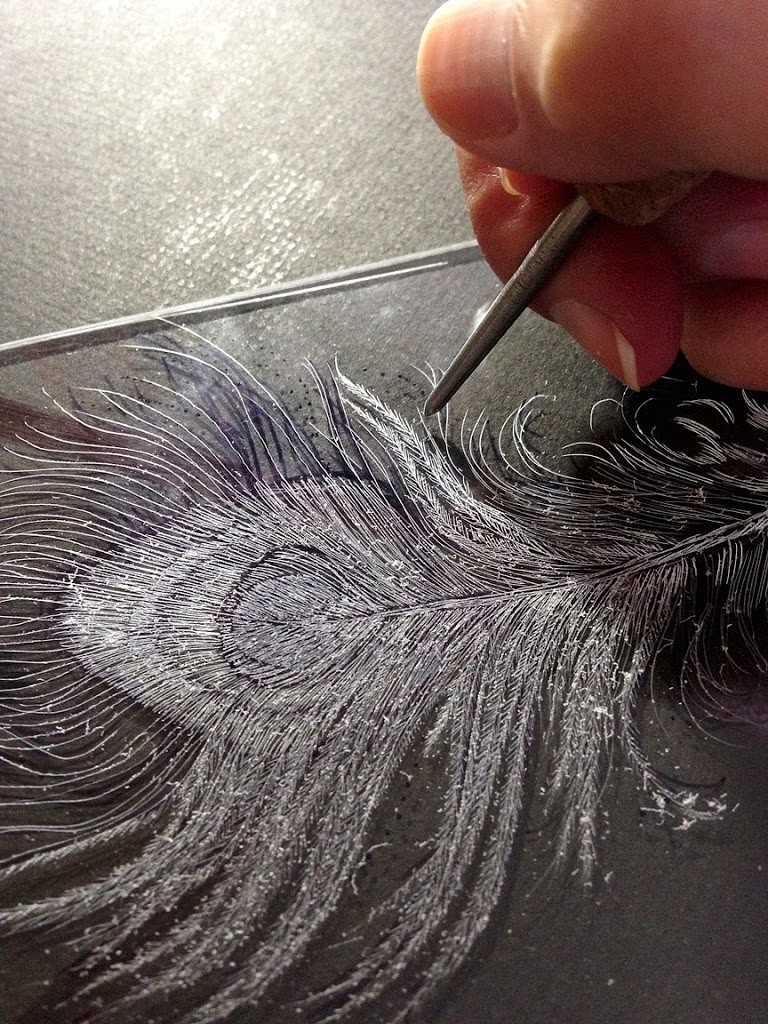
Art Quote
Until one is committed, there is hesitancy, the chance to draw back, always ineffectiveness. Concerning all acts of initiative and creation, there is one elementary truth the ignorance of which kills countless ideas and splendid plans: that the moment one definitely commits oneself, then providence moves too. All sorts of things occur to help one that would never otherwise have occurred. A whole stream of events issues from the decision, raising in one’s favor all manner of unforeseen incidents, meetings and material assistance which no man could have dreamed would have come his way. Whatever you can do or dream you can, begin it. Boldness has genius, power and magic in it. Begin it now.
Johann Wolfgang von Goethe

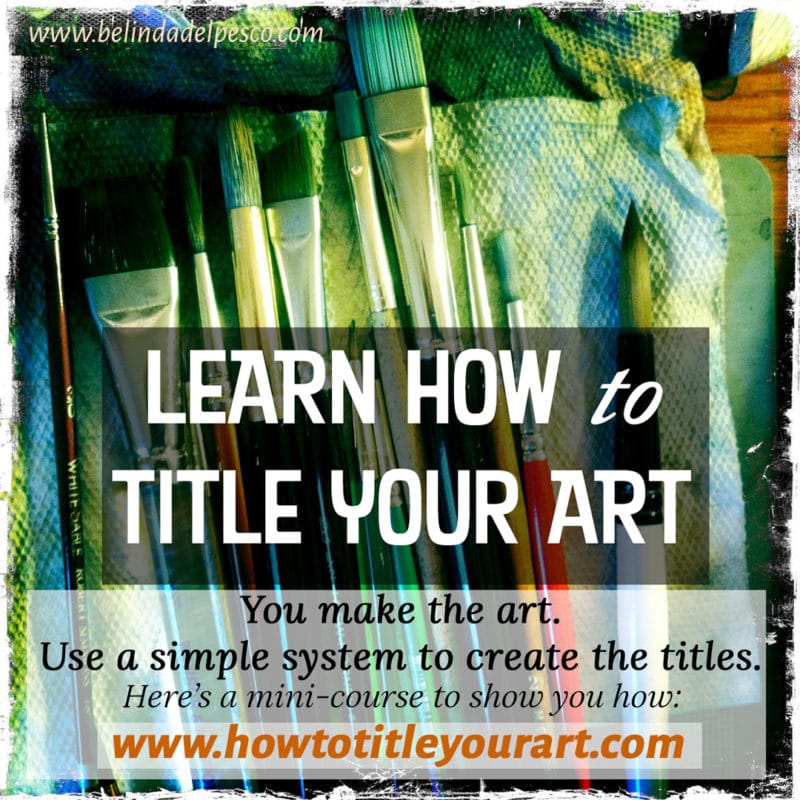
Superb explanation, pictures and demos! The time and research you put into your blogs are so appreciated, as always. How wonderful to be able to watch that old film clip. Thank you!
Hi G! Thanks for your feedback and support! The encouragement you send is tucked into my back pocket for studio fuel. 🙂
I am a not-very-good-at-all printmaker, but I can tell you some things.
You can (sometimes) tell an etching from an engraving by the burr left at the end of a graven line – material pushed up by the stylus. The lines tend to be softer, for the same reason. *See I know stuff too!*
A possible source for plexi, acrylic, perspex, whatever, could be your local frame shop. If you want to start small, you might be able to cadge a left-over piece off them for little or nothing. Don’t buy big pieces there! They use high-falutin’ super-special acrylic, several multiples of what you would pay elsewhere.
I remember when we were in Tim Clark’s Watercolor class a billion years ago. You are now a stellar artist, so proud that we were in the same class way back when. Keep up your great art work!
Hah! Hi Stranger! Looooong time no see! Thanks for your kindness. How nice of you to stop in and say hello! That really *was* a billion years ago, wasn’t it? But you know what? I STILL think about the stuff Tim espoused over that weekend. Do you?
Thank you so much for this post and finding the exceptional film – I found their drying method ingenious, but of course you need a lot of space for an edition. Always enjoying your posts, especially the ones about printmaking processes.
Hi Bianca, Thanks so much for the great feedback. I agree that their “pinned” drying system is amazing (and surface-intensive) and I wish I had a bevy of knowledgeable assistants like that! 🙂